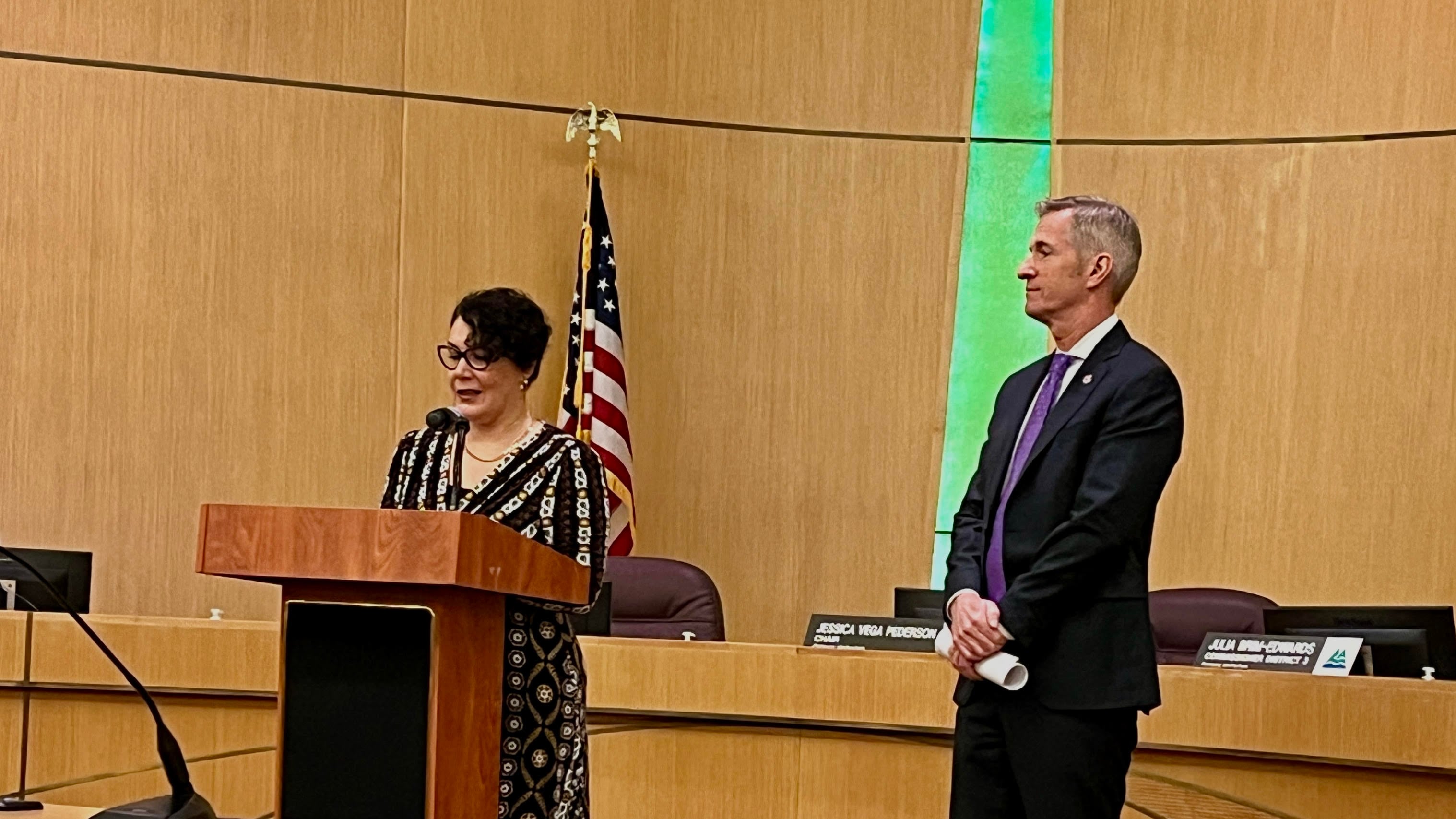More data, fewer tents.
In the simplest terms, that’s what Portland Mayor Ted Wheeler and Multnomah County Chair Jessica Vega Pederson proposed today when they pitched a new three-year contract for the Joint Office of Homeless Services, the troubled partnership that has been trying to house the houseless since 2016.
Their promise: Get an accurate count of the number of homeless people in Multnomah County next month, then cut that number in half in three years, by the end of 2025. Residents weary from past failures can watch the Joint Office’s progress through quarterly reports, they said.
The agreement proposed today must be approved by both the City Council and the County Board of Commissioners.
Neither Wheeler nor Pederson pulled any punches when it came to the record of the Joint Office, which has an annual budget of $232 million aimed at housing the homeless, who numbered 6,500 this year.
“Today marks a new beginning and a reset of the table for how the city of Portland and Multnomah County work together to address the No. 1 issue facing our community,” Wheeler said at a press conference at the Multnomah County Building. “That is, of course, homelessness.”
Under the new agreement, Vega Pederson said the Joint Office would have better tools to house people.
“The joint office was created with a laudable goal of standing up a more holistic system and breaking down inefficiencies and challenges in the silos of this long-standing partnership,” Vega Pederson said. “But in actuality, the Joint Office’s authority didn’t extend to key areas needed to address homelessness like the production of affordable housing and the need for behavioral health services for many living on our streets.”
Pederson and Wheeler vowed to change all that, mostly by gathering more accurate information about how many people are homeless and better coordinating efforts to serve them. To gather data under the new plan, the Joint Office would rely on methods popularized by Community Solutions, a New York-based nonprofit that has had success in housing people nationwide with its Built for Zero program.
The bedrock of Built for Zero’s strategy is a by-name list of every unhoused person and the reason for their predicament. Portland contracted with Built for Zero in November 2021, at the urging of County Commissioner Sharon Meieran and City Commissioner Dan Ryan.
Getting reliable data has been a struggle for the Joint Office. In August, County Auditor Jennifer McGuirk said the office couldn’t reliably say how many people it housed, never mind the number living on the street.
Another struggle: spending the taxpayer dollars allocated to reducing suffering on the streets. Multnomah County has underspent its portion of a 2020 measure to support unhoused people by more than $100 million, a number that Vega Pederson has called “simply unacceptable.”
Beyond halving the homeless population in three years, Wheeler and Vega Pederson said their framework would boost the number of people leaving shelters for housing by 15% during that period and ensure that at least 75% of people rehoused in permanent supportive housing remain there 24 months after placement.
Gov. Tina Kotek, who made housing her top priority when she took office in January and has been intensely critical of local government responses to street conditions, said she supported the plan. “I applaud the mayor and the chair for developing a framework that is essential to addressing the current crisis, and I look forward to partnering with them on its success,” Kotek said in a statement. “This type of partnership and intergovernmental work is precisely what this moment calls for.”
